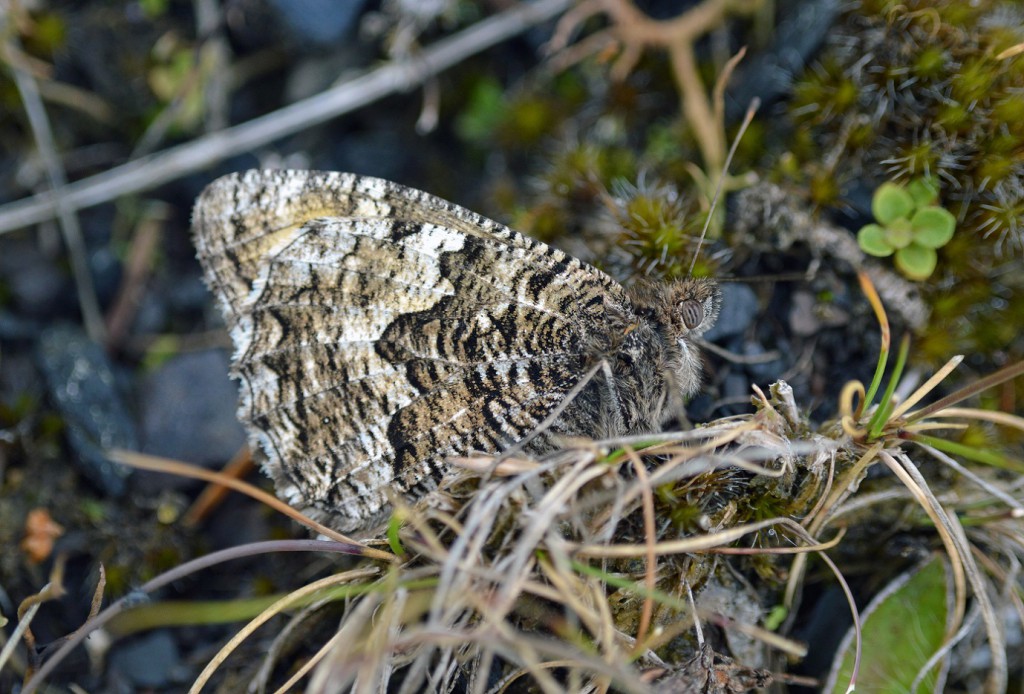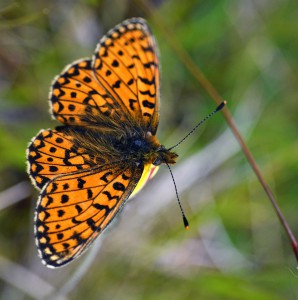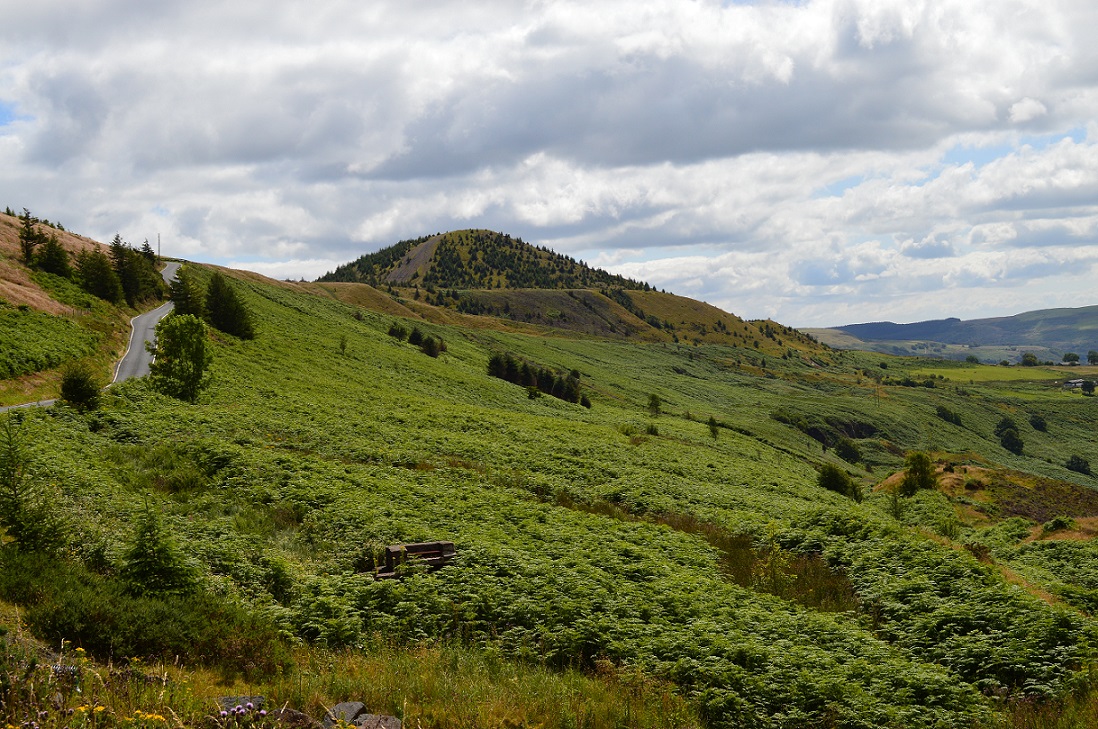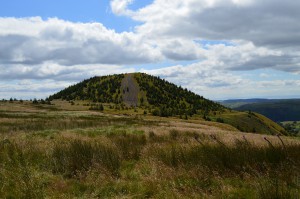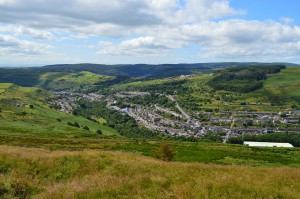
July has been absolutely incredible month! Fieldwork has been going well and I’ve been fortunate to see some incredible wildlife. The past few months have really opened my eyes to the sheer complexity of colliery spoil habitats and the diversity of invertebrate life it supports. Before starting my traineeship, I couldn’t envisage being any more passionate about colliery spoil than I already was. I have learnt so much in the past few months that I am now obsessed by colliery spoil habitats – I eat, sleep and breathe colliery spoil (well, not literally).
Fieldwork & Discoveries
July has been a fantastic month for recording butterflies on the spoil tips of South Wales. On 3rd July, I recorded the first Grayling (Hipparchia Semele) of the year at Dare Valley Country Park. This was actually the first time I had ever seen one, or at least knowingly – a truly memorable experience. The Grayling is very much a colliery spoil specialist, its cryptic colouring providing excellent camouflage against the black spoil substrate. Despite being widespread on the coast and southern heaths of Britain, this butterfly is declining in many areas, particularly inland. As a result, the Grayling is listed as a UK Biodiversity Action Plan (UK BAP) ‘Priority species’ requiring conservation action. Despite its worrying status, this species is locally abundant on the colliery spoil tips of Rhondda Cynon Taff. I have now recorded Grayling on all six of my study sites, and on every other spoil tip I have surveyed – an impressive 100% record!
To my surprise, it appears that the Marbled white (Melanargia galathea) is also associated with some colliery spoil tips. Marbled white made its first appearance on 23rd July at Albion Tip, Cilfynydd. Just two days later, I recorded a very healthy population on Coity Tips at the Big Pit National Coal Museum. Having an association with unimproved flowery grassland, it is perhaps unsurprising their association with colliery spoil tips.
The widespread, but none-the-less impressive, Dark green fritillary (Argynnis aglaja) was first recorded on 30th June at Cilfynydd. They are now locally abundant on four of my six study sites, and have been recorded on several spoil tips elsewhere in recent weeks. Small pearl-bordered fritillary (Boloria selene) made an appearance at two further spoil tips in July. This species is now approaching the end of its flight period, so it’s unlikely I will record it anywhere elsewhere during August. Its presence on over 50% of surveyed spoil tips is encouraging though.
On 18th July, I made an important discovery – recording the locally common Keeled skimmer (Orthetrum coerulescens) at Coedely Colliery. This species is associated with acid, boggy regions of south and south-west Britain. Coedely Colliery currently has no status but the presence of this species alone is enough to warrant the site SINC status – a Site of Importance for Nature Conservation. This is very exciting for me. Of all the spoil tips I have visited and worked on, Coedely Colliery means the most to me. It has been my local site for over 10 years and was where I first discovered wildlife. Some of my most memorable wildlife moments occurred at Coedely Colliery, from seeing my first Emperor dragonfly (Anax imperator) to my first common lizard (Zootoca vivipara). This site have been a hugely influential part of my life, leading me to develop an interest in wildlife and consequently pursue a career in nature conservation. Securing SINC status for Coedely Colliery was one of the most important goals I set myself before starting the traineeship, so it’s great to be close to achieving that goal. Although this status cannot guarantee the future of the site, it will ensure the site gains proper consideration at the planning application stage should any development proposals be made.
Perhaps my most exciting discovery so far was made this month. While browsing through my species records and photos, I noticed that on 13th May I recorded the Heather shieldbug (Rhacognathus punctatus) at Cilfynydd. This species is widely distributed in the UK, but always scarce and present in low densities. The full-scale of its scarcity in Wales became clear when I stumbled across a paper published by Alex. J. Ramsey in 2013. Entitled ‘Habitat Preference and Distribution of Rhacognathus punctatus (Hemiptera: Pentatomidae) in Wales’, this paper highlighted that the species had only been recorded from nine sites in Wales. Interestingly, all records in Wales are from high quality wetland habitats usually partly or entirely designated as National Nature Reserves. The paper also stated that ‘any site at which R. punctatus is recorded in Wales is indicative of long habitat continuity’. With this record occurring on a colliery spoil tip, this habitat clearly hasn’t experienced long continuity and is in fact a new habitat undergoing secondary succession. This finding suggests that R. punctatus is not restricted to such habitats with a long continuity after all. This finding raises some interesting questions and is potentially significant in being the first record on a brownfield site in Wales (and maybe the UK?).
Visits
For a long time, I have been itching to visit Tylorstown Tip – known locally as ‘Old Smokey’. Tylorstown Tip is a highly impressive pyramidal spoil tip situated on Llanwonno Mountain, overlooking Rhondda Fach. On 30th July, I visited the site for the very first time, which was extremely exciting. The tip is unbelievably high and from the top, it offers some fantastic views of South Wales. Tylorstown Tip is home to the most impressive Grayling (Hipparchia Semele) population I have ever seen. Imagine walking through a meadow in summer and seeing lots of Meadow Brown (Maniola jurtina). Substitute those Meadow Brown’s for Grayling, then multiply the abundance by 5 or more times – and that gives you an idea how many there are at Tylorstown Tip. In a short period of time, I must have seen 50 or more individuals – it was an unbelievable experience!
During July, I also visited Maerdy Tip (Rhondda) for the very first time. The site is home to some impressive species including Grayling, Dark green fritillary, Small pearl-bordered fritillary and Mountain bumblebee (Bombus monticola).
Events
On 25th July, I assisted Barbara Brown from OPAL in delivering bug hunts with the public on Coity Tips, Big Pit National Coal Museum, Blaenavon. This offered a great opportunity to raise awareness of the biological importance of colliery spoil tips, while also generating invertebrate records. It turns out that Coity Tip is home to an impressive population of Marbled White’s, more than I have ever seen elsewhere. The species list also includes Grayling, Meadow Brown, Ringlet (Aphantopus hyperantus), Gatekeeper (Pyronia tithonus), Small skipper (Thymelicus sylvestris), Large skipper (Ochlodes sylvanus), Dingy skipper (Erynnis tages), Small heath (Coenonympha pamphilus), and others. During the course of the day, I assisted in helping families to catch and identify invertebrates. I also assisted with building bug kites with children, which was very good fun. If you ever need a bug kite, you know who to call 🙂
Thanks for reading!

